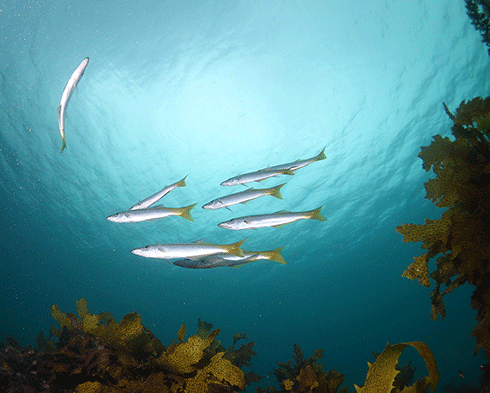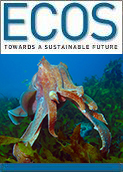
|
Published: 30 September 2013
Biodiversity hotspots found in cool waters
Tropical coral reefs are the oceans’ biodiversity hotspots right? Not necessarily, concludes a new international study that challenges ideas about where marine parks and other biodiversity conservation measures should be focused.

|
|
Long-finned pike in southern Australian waters: while some temperate waters may have fewer species than tropical coral reefs, they may have a higher ‘functional diversity’. Credit: John Turnbull under CC BY-NC-SA 2.0
|
By measuring factors other than species count – instead using features such as a species' role in an ecosystem or the number of individuals within a species – the global study of reef fishes revealed new biodiversity hotspots in nutrient-rich, temperate waters.
The study, led by Dr Rick Stuart-Smith of the University of Tasmania's Institute for Marine and Antarctic Studies, has just been published in the journal Nature.
The research team included researchers from Stockholm University; the University of Bologna; Stanford University; the Virginia Institute of Marine Science; the Natural Products and Agrobiology Institute in Tenerife, Spain; the Wildlife Conservation Society's Indonesia Marine Program; the University of Dundee; the Pontifical Catholic University of Chile; and the University of Portsmouth.
Data used in the study was collected through the Reef Life Survey program, a citizen science initiative developed in Tasmania. The RLS program now operates worldwide, training recreational SCUBA divers to survey numbers of reef animals.
Stuart-Smith and fellow RLS founder Graham Edgar, also from the University of Tasmania, highlighted the central role the volunteer divers played in contributing to the new study.
‘The assistance of over 100 dedicated divers has allowed us to look at ecological patterns and processes impossible for scientific dive teams to cover,’ says Edgar.
The number of different species in an ecosystem – or ‘species richness’ – has long been used as a biological basis for prioritising threatened ecosystems. The approach in the new study, however, was to measure the degree of dissimilarity between ecosystems, including animal numbers and behaviours as well as species.
The team conducted their study by analysing data from 4357 standardised surveys conducted by volunteer RLS divers at 1844 coral and rocky reef sites worldwide. The surveys spanned 133 degrees of latitude and found 2473 different species of fish.
Moving beyond traditional species counts, the research team noted how the members of each of these species make a living, using a detailed matrix of ‘functional traits.’ These include what the fishes eat (plankton, invertebrates, algae, other fish, or a combination), how they eat it (browsing, scraping, or predation), where they live (in, on, or near the bottom, attached, or free-swimming), whether they are active at night or during the day, and how gregarious they are (solitary, paired, or schooling).
The study found that functional biodiversity is highest in places like the Galápagos, which have only moderate species counts; on the other hand, functional biodiversity is low in many classic biodiversity hotspots with high species counts, such as the Coral Triangle of the West Pacific.
The team's findings have important implications for planning and management. Stuart-Smith notes that, ‘Incorporating information on functional traits into monitoring programs will add an extra dimension and greater ecological relevance to global efforts to manage and conserve marine biodiversity.’
Source: EurekAlert



